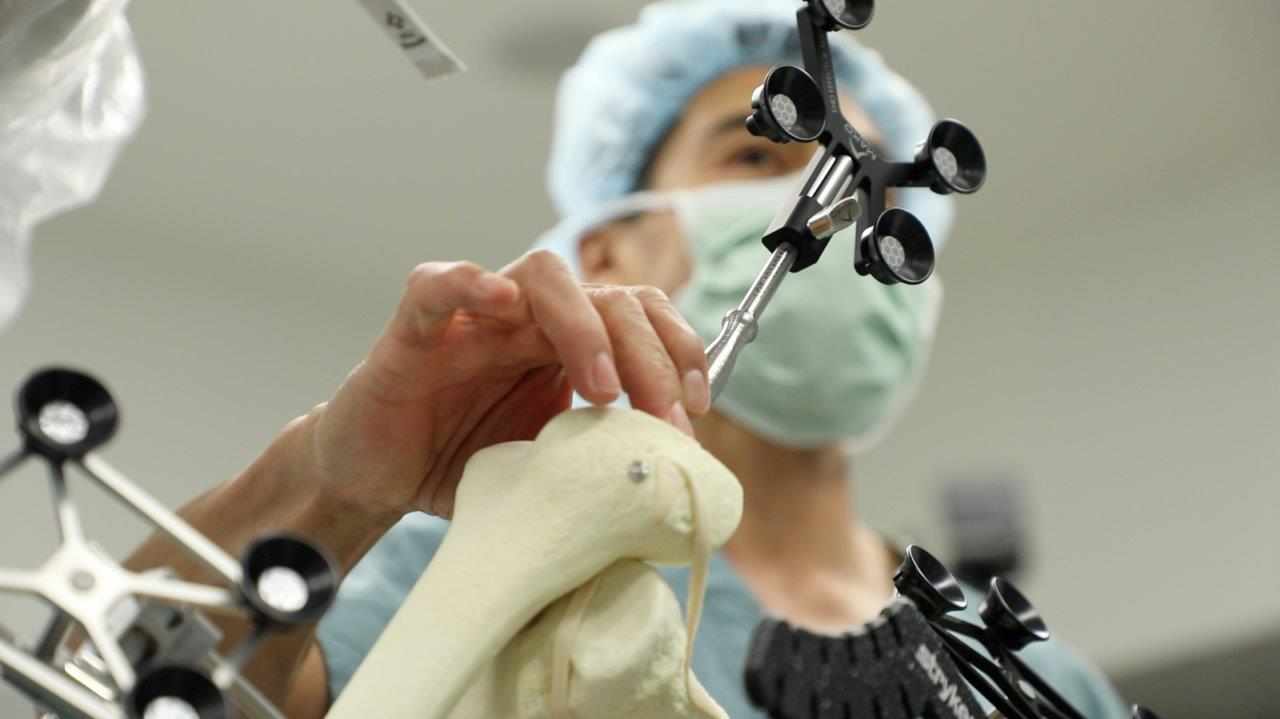-
Featured News
Robotic arm-assisted knee surgery offers hope for arthritis patients

More than 800,000 knee replacement surgeries are performed in the U.S. each year. The typical patient is over 60 and has osteoarthritis, the most common joint disorder. Osteoarthritis results when the cartilage that covers the ends of your bones break down and wear away.
Mayo Clinic is the first in the Northeast Florida to offer robotic arm-assisted surgery for total knee replacements. This procedure offers hope for younger patients and improves outcomes.
Knee issues not only limit mobility, but also affect quality of life. But, due to the durability of implants, knee replacement surgery typically is reserved for patients over 60. And, even then, some patients report the implant does not feel as natural as their original joint.
Watch: Dr. Ortiguera discusses robotic arm-assisted total knee replacement.
Journalists, sound bites with Dr. Ortiguera are in the downloads.
MEDIA CONTACT: Cynthia Weiss, Mayo Clinic Public Affairs, 904-953-2299, weiss.cynthia@mayo.edu
“Technology allows us to improve, so our patients benefit,” says Dr. Cedric Ortiguera, an orthopedic surgeon at Mayo Clinic, noting physicians on the Florida campus began using the technique for partial knee replacements in 2010.
“We know that the more accurate we can be in positioning implants, the longer the implant will last, and the better the patient’s knee will feel and function,” Dr. Ortiguera says.
“Our surgeons’ hands and our traditional techniques are accurate to about 97 percent, but with the assistance of a robotic arm, we can improve accuracy to about 99 percent or better,” he says.
Despite its name – robotic arm-assisted knee replacement – Dr. Ortiguera is quick to remind that the surgeon is always in control.
Dr. Ortiguera explains that the robot guides the instruments using precise calculations from pre-operative imaging. “The advantage is that the surgical field is precisely controlled and the alignment is more precise. The robotic arm allows us to make intra-operative adjustments to implant placement and balancing the ligaments. For the patient, this means the operation is safer, the recovery time may be shorter, and they will have a more natural-feeling knee,” he says.
Traditionally, due to the nature of knee implants, patients under 60 had been counseled to forgo surgery until absolutely necessary.
“In the past, most implants had a life span of about 10 to 15 years, making it challenging for our younger patients who were told to manage the osteoarthritis in their knees with injections, weight loss and physical therapy,” says Dr. Ortiguera.
“Now, as technology has improved, we can make the implants last perhaps the lifetime of a patient, so more younger patients, in their 40s and 50s, can have a total knee replacement surgery now and maintain a good, active quality of life rather than waiting.”
Following robotic-arm assisted surgery, patients typically remain in the hospital for up to two days. Most then use a walker or crutches for about a week before transitioning to a cane for another three to four weeks.







